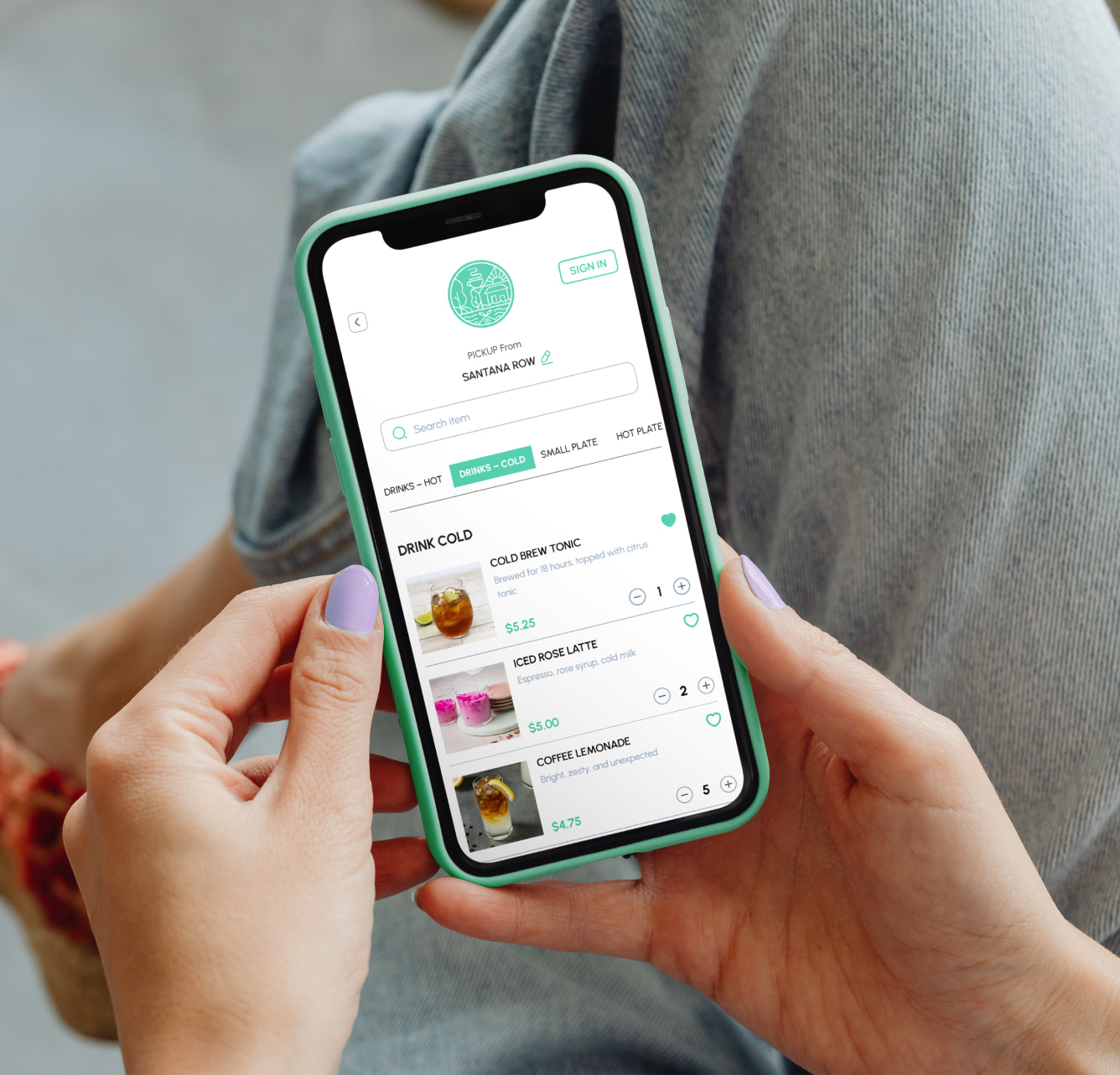Key Takeaways
The Chinese restaurant industry is experiencing unprecedented demand, with Americans enthusiastically embracing authentic flavors and culinary traditions. As digital transformation accelerates and consumer expectations evolve, standing out requires more than just a classic menu—it demands creative, culturally sensitive marketing strategies that highlight both tradition and innovation. Discover 15 actionable Chinese Restaurant marketing ideas designed to attract loyal customers, drive online orders, and honor the rich heritage of Chinese cuisine, all while leveraging the latest restaurant technology for operational excellence.
How to Build a Winning Marketing Plan for Your Chinese Restaurant
A successful Chinese Restaurant marketing plan blends authenticity, technology, and deep cultural understanding. With digital marketing spend surging and consumers seeking personalized experiences, restaurant owners need strategies that embrace innovation without sacrificing tradition. The right approach not only brings in new guests, but also builds a loyal base that values the story and soul behind every dish.
To maximize results, organize your Chinese Restaurant marketing ideas around two key pillars: practicality (scalable, efficient strategies) and creativity (local adaptation, cultural authenticity). By harnessing technology platforms like Restolabs for commission-free online ordering, you can transform your marketing vision into measurable business growth.
Explore Top Chinese Restaurant Marketing Ideas by Category
This guide breaks down the most effective Chinese Restaurant marketing ideas into two core categories—each designed to help you select, adapt, and scale strategies that match your restaurant’s unique strengths.
Practicality and Scalability: Smart Strategies for Sustainable Growth
1. Optimize Your Online Presence with an Authentic, Mobile-First Website
Your website is the cornerstone of modern Chinese Restaurant marketing. As digital marketing becomes the primary growth driver, a visually appealing, mobile-optimized site with integrated online ordering is a non-negotiable asset. Ensure your site features high-quality images of signature dishes like Peking duck or hand-pulled noodles, clear descriptions that explain traditional ingredients, and easy navigation—especially for mobile customers who now make up the majority of online visitors.
Tip: Use ingredient-focused storytelling to highlight the cultural significance of dishes, and consider including a glossary for regional specialties or less-familiar ingredients.
2. Activate Commission-Free Online Ordering to Boost Profits
With Chinese food accounting for a significant share of the U.S. takeout market, offering commission-free online ordering protects your margins from third-party fees and gives you direct access to valuable customer data. Integrate your ordering system into your website and social media channels, making it easy for customers to order classics like mapo tofu or dim sum platters with just a few taps.
Tip: Promote your online ordering platform with limited-time offers exclusive to direct orders, such as a free appetizer for first-time users.
3. Invest in Local SEO to Dominate Regional Search Results
Appearing at the top of local search results is crucial, especially as more diners search for “best Chinese food near me.” Optimize your Google Business Profile with accurate hours, compelling photos, and up-to-date menus. Use local keywords, such as the names of your specialty cuisines (Sichuan, Cantonese, etc.), and encourage happy customers to leave reviews that mention favorite dishes or unique dining experiences.
Tip: Highlight your participation in local events or partnerships with community organizations to build credibility and drive local traffic.
4. Streamline Operations with Integrated POS and Order Management
Efficient operations power great customer experiences. Implement a restaurant POS system that connects online orders, in-house dining, and delivery channels, so every kung pao chicken or xiao long bao is prepared and delivered without a hitch. Choose platforms that support bilingual menus, real-time inventory tracking, and multi-currency payments—crucial for multicultural teams and customers.
Tip: Use sales analytics to identify top-performing dishes and inform future promotions or menu adjustments.
5. Launch a Digital Loyalty Program to Encourage Repeat Visits
Reward your most loyal customers—those who order hot pot every week or can’t get enough of your scallion pancakes—with a digital loyalty program. Offer points for every purchase, double points during holidays like Lunar New Year, and special rewards for referring friends. Digital programs are easy to manage and can be customized for different customer segments, such as students, families, or local business clients.
Tip: Highlight authentic rewards, such as a chef’s tasting menu or a behind-the-scenes kitchen tour, to deepen cultural engagement.
6. Use Data-Driven Email Marketing to Personalize Customer Outreach
Email marketing remains one of the most cost-effective Chinese Restaurant strategies. Segment your list by order history or location, and send targeted messages featuring seasonal dishes, upcoming events, or personalized offers. Share stories about the origins of classic dishes, spotlight unique ingredients, and invite customers to exclusive tastings or cooking classes.
Tip: Include visually rich content, such as videos of chefs hand-pulling noodles or preparing traditional tea, to increase engagement.
7. Implement Automated Review Requests for Reputation Management
Reputation is everything in the restaurant business. After each visit or online order, automatically request feedback via SMS or email. Address any negative comments promptly and publicly thank customers for positive reviews, especially those that mention authentic experiences or favorite regional dishes. High ratings drive more traffic and build trust.
Tip: Display top customer testimonials on your website and social media, focusing on the authenticity and quality of your cuisine.
Creativity and Local Adaptation: Culturally Rich, Community-Driven Promotions
8. Celebrate Cultural Holidays with Authentic Festive Menus
Chinese cuisine is deeply intertwined with centuries of tradition. Mark important events like Lunar New Year, Mid-Autumn Festival, or Dragon Boat Festival with special menus featuring symbolic dishes—whole steamed fish for prosperity, mooncakes for reunion, or zongzi for good fortune. Share the stories behind these dishes in your marketing, educating customers and inviting them to experience the celebration.
Tip: Host family-style banquets or cultural performances to immerse diners in the full festive atmosphere.
9. Highlight Signature Ingredients Through Ingredient-Focused Campaigns
Educate your audience about the flavors and origins of unique ingredients—Sichuan peppercorns, black vinegar, lotus root, or Chinese chives. Create social media posts, short videos, or in-store displays that spotlight how these ingredients are sourced, their cultural significance, and how they transform dishes. Ingredient-focused marketing builds appreciation and reduces hesitation for customers unfamiliar with authentic Chinese flavors.
Tip: Offer tasting flights or small plates featuring different preparations of a single ingredient.
10. Showcase Traditional Cooking Methods in Behind-the-Scenes Content
Bring your kitchen to the forefront by sharing videos and stories about traditional techniques: hand-pulling noodles, wok tossing, dumpling folding, or slow-braising meats. Behind-the-scenes content demystifies complex preparations and builds respect for your chefs’ skills, while highlighting the distinctiveness of your menu.
Tip: Host live cooking demonstrations on social media or in-person, inviting guests to participate and learn.
11. Collaborate with Local Influencers for Community Engagement
Partner with food bloggers, local celebrities, or cultural ambassadors who appreciate authentic Chinese cuisine. Invite them to exclusive tastings or cultural events, and encourage them to share their experiences with their followers. Influencer partnerships expand your reach and lend credibility, especially among younger diners seeking authenticity.
Tip: Choose partners who are knowledgeable about Chinese food to avoid stereotypes and ensure cultural sensitivity.
12. Launch Limited-Time Regional Cuisine Spotlights
Rotate featured menus based on China’s diverse culinary regions—offer Yunnan mushroom hotpot in the fall, Hunan spicy fish in winter, or Shanghai hairy crab in spring. Use storytelling to introduce each region, its history, and its signature ingredients. This approach keeps your menu dynamic and encourages regular visits from adventurous eaters.
Tip: Display maps or cultural artifacts in your restaurant to visually connect dishes to their regions of origin.
13. Design Visually Striking Social Media Campaigns with Cultural Context
Leverage the power of video and visual storytelling by featuring beautifully plated dishes, chef interviews, and customer testimonials. Incorporate traditional motifs—calligraphy, red lanterns, or dragon imagery—while explaining their meaning to avoid clichés. Share posts about festivals, ingredient stories, or the history of iconic dishes.
Tip: Use subtitled videos to reach a broader audience, including both English and Chinese speakers.
14. Address Dietary Preferences with Transparent, Authentic Options
Chinese cuisine naturally accommodates many dietary needs—vegetarian, vegan, gluten-free, and more. Clearly label dishes and ingredients, and explain preparation methods to reassure customers with allergies or dietary restrictions. Promote naturally vegan dishes, such as Buddha’s Delight, and offer customizable options without compromising authenticity.
Tip: Train staff to confidently discuss ingredients and preparation, and provide allergen information both online and in-house.
15. Host Educational Events to Promote Cuisine and Culture
Offer dumpling-making classes, tea tastings, or ingredient workshops. These events educate diners, deepen their connection to Chinese culinary traditions, and generate social media buzz. Educational experiences position your restaurant as a cultural ambassador, not just a place to eat.
Tip: Collaborate with local schools or cultural centers to expand your reach and establish your restaurant as a leader in Chinese Restaurant promotions.
Bringing It All Together: Drive Results with Seamless Technology and Restolabs
Building a thriving Chinese restaurant means balancing heritage with innovation. The most effective Chinese Restaurant marketing ideas are those that honor authenticity, foster community connections, and make full use of modern restaurant technology. Platforms like Restolabs empower you to manage online orders, streamline operations, and gather actionable data—all without sacrificing your unique cultural identity.
- Increase direct sales and protect your margins
- Personalize promotions and build repeat business
- Showcase authentic cuisine with every digital interaction
- Scale your marketing efficiently while staying true to tradition
Restolabs helps Chinese Restaurant owners bridge the gap between operational efficiency and authentic marketing, ensuring your restaurant stands out in a crowded market. Whether you’re spotlighting ancient cooking methods or launching a new regional specialty, pairing these strategies with powerful technology is your recipe for lasting growth and community impact. Ready to take your Chinese restaurant marketing to the next level? Book a demo today and unlock the full potential of your brand.
Frequently Asked Questions
Commission-free online ordering lets customers order directly from your website, bypassing third-party apps and their 15–30% commissions. This means more profit for you, direct access to customer info for marketing, and greater control over the guest experience. You can link this ordering system to your site and social channels for convenience
Optimize your Google Business Profile with up-to-date hours, menu, and enticing food photos. Use local keywords (like "Sichuan restaurant near me") and encourage happy diners to write reviews mentioning favorite dishes. Showcase your involvement in local events or partnerships to boost community trust and visibility.
Design festive menus with symbolic dishes (e.g., whole fish for Lunar New Year, mooncakes for Mid-Autumn Festival). Share the meaning behind these foods in your marketing—on social media, your website, and in-store. Consider hosting themed banquets or cultural performances to create a memorable, immersive atmosphere.
Spotlight unique ingredients (like Sichuan peppercorns) through social posts, short videos, or table cards explaining their origins and flavors. Offer tasting plates or ingredient flights. Add a glossary to your website and train staff to confidently talk about specialty items and regional cuisine.
Choose a platform that offers bilingual menus, real-time inventory tracking, and multi-currency support for diverse teams and guests. Look for integrated POS systems that connect dine-in, online, and delivery orders, plus robust sales analytics and customer data tools for personalized marketing.


.gif)
.png)
.png)






